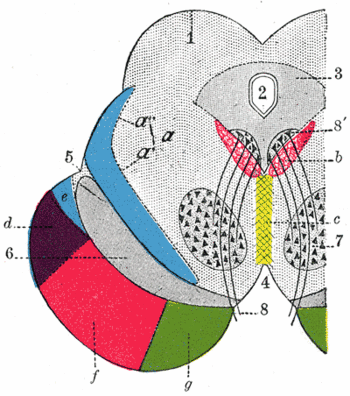Decerebrate rigidity: Difference between revisions
imported>Caesar Schinas m (Update image code) |
imported>Howard C. Berkowitz mNo edit summary |
||
| Line 7: | Line 7: | ||
[[Decorticate rigidity]] is similar except the upper extremities are flexed, the lesion is above the [[red nucleus]], and the motor score of the [[Glasgow Coma Scale]] is reduced to 3 points. | [[Decorticate rigidity]] is similar except the upper extremities are flexed, the lesion is above the [[red nucleus]], and the motor score of the [[Glasgow Coma Scale]] is reduced to 3 points. | ||
==References== | ==References== | ||
<references/> | <references/> | ||
Revision as of 04:50, 6 October 2010
In neurological physical examination, decerebrate rigidity is a "condition characterized by abnormal posturing of the limbs that is associated with injury to the brainstem. This may occur as a clinical manifestation or induced experimentally in animals. The extensor reflexes are exaggerated leading to rigid extension of the limbs accompanied by hyperreflexia and opisthotonus. This condition is usually caused by lesions which occur in the region of the brainstem that lies between the red nuclei and the vestibular nuclei."[1][2]
Decerebrate rigidity reduced the motor score of the Glasgow Coma Scale to 2 points.
Decorticate rigidity is similar except the upper extremities are flexed, the lesion is above the red nucleus, and the motor score of the Glasgow Coma Scale is reduced to 3 points.
References
- ↑ Anonymous (2024), Decerebrate rigidity (English). Medical Subject Headings. U.S. National Library of Medicine.
- ↑ Ropper, Allan H.; Adams, Raymond Delacy; Victor, Maurice (1997). Principles of Neurology (in English), 6th. New York: McGraw-Hill, Health Professions Division, 358. ISBN 0-07-067439-6.
